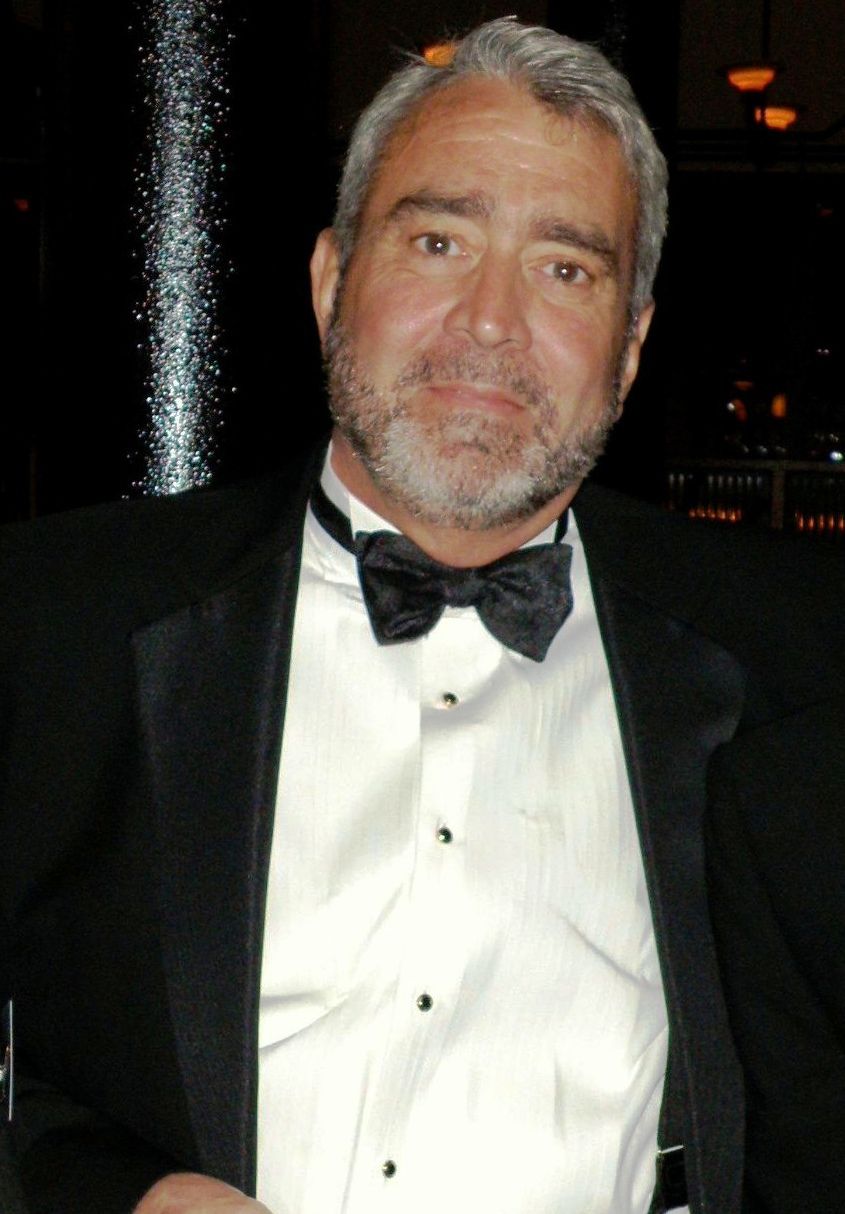Thursday's Columns
August 22, 2024
Correspondent Dispatch
by Marc Etter
Chief of Station
Westphalia News Bureau, Detroit

Marc Etter
(Editor's Note: We think the character named Benny in the following dispatch bears a striking resemblance to our own ace reporter, Lawrence Abby Gauthier, back in the days.)
Pink Embers Beneath the Ash
Everybody in our Bohemian circle called him Benny. Benny was the name of the main character in the novel he had been writing since his freshman year at Northern Michigan University, on the southern shore of Lake Superior, in Michigan’s “Upper Peninsula,” or the U.P., where people call themselves Yoopers. He was sure the novel would make him famous.
It was the winter of 1971. Benny was a Yooper. I was from the big city, Detroit.
One day he bursts into the apartment all excited. “I got the job!” he said. “I’m going to be a newspaper reporter at the Hillsdale Daily News.”
The apartment was our latest off-campus flop house/crash pad for students in between living arrangements. We weren’t into the hippie commune scene (we wore long trench coats from the local St. Vincent DePaul secondhand store) but we shared expenses.
We’d gone through a couple of apartments that Benny kept getting us all kicked out of. He was very political, very class conscious. As far as he was concerned, there were two classes – working class and a landlord class. So, there was always tension from the moment somebody put down a deposit. We all left one place in a fit of high disgust because of what we considered the unacceptable comments and behavior of the lower-flat tenant, who was also the landlady’s mother. Then we all got tossed out of another place after Benny wrote a freelance story for the local newspaper correctly revealing the building’s fire code violations. Although we were all left homeless until we could find another place, he, at least, had made sure that things were politically correct.
Now Benny had a problem. Hillsdale was a small town on the Michigan/Indiana border, 500 miles to the south. His problem was how to get there. I told him I’d help, but neither one of us owned a car. But my parents had a few. We could hitchhike to Detroit and drive to Hillsdale in one of their cars.
I was happy for Benny. Impressed. But also a bit sad to lose my friend to the real world after all the fun and trouble we had gotten ourselves into during our college years.
But we had some real achievements, famous in the bars and classrooms for being opinionated, loud, arrogant, and quite frequently, notoriously drunk. We had managed to get thrown out of many of them – bars, classrooms and crash pads. Today you might refer to the behavior as boorish, but at that time we knew we were very, very cool.
We put together a plan, gathered up his stuff and stuck our thumbs out standing on old Highway 41 in Marquette, heading south.
Hitchhiking in the early 1970’s in Michigan was remarkably efficient at the time and we arrived at my parents’ home in Birmingham in a little less than eight hours. The plan was to spend the night there and then take my mother’s car to get Benny to work. However, when Benny saw the house he claimed he could never stay there. He said: “I had no idea this was how you lived. Obviously, your parents are members of the power elite. You’ll have to find me a room somewhere else.”
We got in my mother’s car and headed south down Woodward Avenue, through Birmingham, Royal Oak and Ferndale, which were entirely out of the question until we finally found a dump of an SRO hotel in Allen Park, a few miles north of the Detroit border. It better aligned with Benny’s ethics and principles.
I broke land speed records getting back to the safety of Birmingham. After all, the horrors of 1968 that had nearly destroyed the city were just a few short years before. Real rebuilding would not start for years. It was also the beginning of the long decline of the auto industry, the city’s population and popularity. Most areas of the city were unsafe and the violent crime and murder rates were through the roof. You never went down there unless you had to. I still remember how relieved the family was when my father’s office was moved out of Detroit’s’ Fisher Building to suburban Southfield.
I picked Benny up the following morning and we headed to Hillsdale.
It was going to be a nice ride. My mother had a green 1967 Mercury Caliente that my father had actually won in some charity auction. It had wonderful black leather seats, an expense he would have never gone with if he were buying the car.
Our plan was to find a cheap motel near Hillsdale and I would stay the night and most of the next day to help him scout for an apartment, or even just a room.
As soon as we got to the motel, though, we decided that we needed to have a look at every bar in town and did. I remember one final lesson Benny taught me. On our way back to the motel, he made us stop and get a six pack of Coke. He explained that if, indeed, we got sick during the night and had to toss up the booze that it wouldn’t taste so bad if we’d first mixed in some Coke. He said it was a secret that Yoopers knew.
I was going to miss him. He was a few years older than me, which was significant. To have the older guys like and accept you was a real big deal to me then. I worked under him at the college newspaper, The North Wind, which he wrote for and was also the managing editor for. I was in awe of his intellect and talent, as was just about everyone who read his work. We had had quite a time and I learned a lot from him.
Our paths had crossed like a scene in a play, but now it was time to go our separate ways.
Fifty years later, he’s way out west in a suburb of Denver, married to a retired university professor and running his own incorporated publishing company, not making any money at it, but still chasing a dream, Hemingway’s dream of writing “one true sentence.”
My path would be more circular. I left Detroit behind me a few years after graduating from NMU to start a modestly successful career in advertising space sales in Chicago. I would live in lots of places, from San Francisco, Austin, Grand Cayman Island and then, when it came time to retire, circumstances led me back to Detroit.
It’s not the same city that I left fifty years ago. After I left, Detroit got a lot worse before it began to get better. Did it recover? It is a trick question. Do you go from being the largest manufacturing power in the world with a population of 1.5 million people down to a city of just under 700,000, a city that deteriorated and then started to come back from near ruin and have a word like ”recovery” in the parlance?
To get out of the house, a few days a week I drive a non-emergency medical van taking very low-income folks all over Detroit to their therapy, medical and dialysis appointments. I pick most of them up in areas that would never be considered “recovered.”
But I remember a story Benny wrote for the college newspaper. It was in the style of Jack London’s To Build a Fire. Instead of building a fire to survive the night, his story was about the morning after, sifting through the ash of a self-consuming campfire, searching for pink embers to nourish back to life with pine needles and dry leaves of oak.
Beneath the ashes of a bygone city you can still find pink embers if you know where to look.
I can tell you this: there is, indeed, plenty of good going on now in Detroit. Philanthropy is back in fashion. Ford just spent over a billion dollars renovating Michigan Central Station. There are a few fabulous pizza fortunes tossing their money around like crazy. The Detroit Symphony now plays again at its original hall, an acoustic and architectural gem that was nearly lost. The Detroit Opera Company will produce a season of four shows this year at Detroit Opera House. The Lions came really close to the Championship last year and the Tigers, well, the Tigers are ‘on the way.’
When it comes to the topographical and geographical blight, we have a different story. There are half as many people as there were in the heyday and those who left had homes they left behind. Many are either still abandoned or burned out and they dot every neighborhood I drive in. The city has a great, successful plan for such property administered by an entity called the Detroit Land Bank. You can pick up these properties for nothing more than a pledge to improve them. In the middle of a decrepit street, it’s refreshing to see an urban garden inviting the neighbors to help themselves to the produce.
But the scale of the exodus was immense and it will be many more years before the blight is erased. It will require a tremendous influx of people to move here to realize this future value that is all over. Just because of the sheer huge scope of it, years of population increases will be needed to absorb it all.
There is another dynamic at play. It is best exemplified by the story of a young entrepreneur who is related to an old friend of mine who keeps me apprised of what this insightful young man and his wife are up to. The couples’ first leap into investing in Detroit was to buy the old bath house rife with Jewish Mafia lore in one of the most forlorn neighborhoods in the inner city. Many thousands of dollars later, with clever retrofitting and extensive repair, the place became a hit. Next, they bought an old abandoned convent and converted it into an artists’ community where local talent rents space to work and exhibit their creations-- be it product, lessons, or performance, it’s sold out. Then they bought an old, empty Romanian church and made it into a health and wellness center. Another hit.
And more. There was, for decades, an iconic donut place. It went out of business and closed some years ago. They found that the third generation of the family that founded it was still around. They bought it, fixed it up and got the family to participate and run the place using the old recipes. I went there the other day and the line was a block long.
There are gems like these all over the city. Pink embers. My hope would be more folks like these, with smart research, marketing, hope and vision will find and embrace such opportunities. Because no matter where it is, if what you put up is very cool and timely, evidently, they will come.
